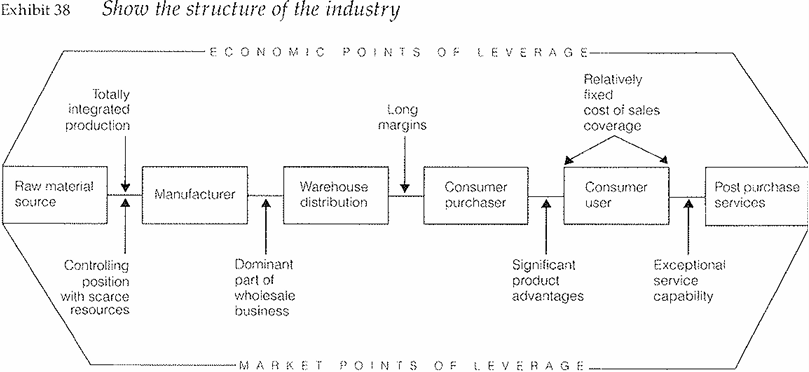
DEVISING DIAGNOSTIC FRAMEWORKS
 المؤلف:
BARBARA MINTO
المؤلف:
BARBARA MINTO
 المصدر:
THE MINTO PYRAMID PRINCIPLE
المصدر:
THE MINTO PYRAMID PRINCIPLE
 الجزء والصفحة:
143-9
الجزء والصفحة:
143-9
 2024-09-23
2024-09-23
 930
930
DEVISING DIAGNOSTIC FRAMEWORKS
You use diagnostic frameworks to help you visualize what's going on in the area within which the client's problem occurred. This visualization in turn reveals the elements or activities on which your analysis should focus. To take a very simple example,1 let's say your head hurts, you don't know why, and so you can't decide how to treat it. Step one would be to try to visualize the possible causes of the problem.

If your head hurts, a MECE classification reveals that it can be caused either by something physical or by something mental. If the cause is physical, the subcauses can have been either external or internal. If external, you may have bumped your head, or have allergies, or be responding to the weather, etc.
With this layout, you can assess the possible causes in the order in which they are easiest to eliminate. In other words, you are not going to set up an appointment to test for a brain tumor if it turns out you have a sinus headache.
We know that, Imposing Logical Order; that there are only three possible ways to structure anything: divide, trace cause and effect, or classify. You use one or more of these techniques in developing a diagnostic framework to get at the likely causes of a problem.

Exhibit 37, for example, shows the elements of sales and marketing available to the retailer to influence the consumer to buy Thus, one of the things you would need to determine would be whether share of market is down (R1) because they don't make the customer sufficiently aware, because they don't convince him to buy, etc.
Another typical analysis at the beginning of a study is to try to understand the business process and key trends in an industry, as a basis for identifying danger areas. Here, you segment the industry (Exhibit 38) and determine volume and competitive structure for each segment. You can also attempt to determine where value is added, how costs behave, where profits are made, where profits are sensitive, and where assets are committed. Then you can look for points of leverage, and from those gather data to determine where the business is vulnerable.

1 From an internal presentation at Andersen Consulting.
 الاكثر قراءة في Writing
الاكثر قراءة في Writing
 اخر الاخبار
اخر الاخبار
اخبار العتبة العباسية المقدسة


